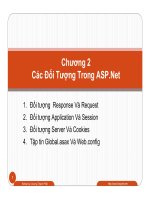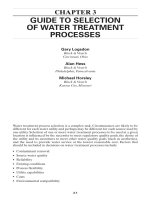2013 05 15 08 03 58 robust SEO tủ tài liệu bách khoa
Bạn đang xem bản rút gọn của tài liệu. Xem và tải ngay bản đầy đủ của tài liệu tại đây (922.32 KB, 15 trang )
Robust SEO
Earners Classroom
© EARNERS CLASSROOM
Notice of Copyright 2013
All Rights Reserved
THIS INFORMATION IS FOR YOUR EYES ONLY. THIS ENTIRE COURSE IS FOR YOUR
OWN PERSONAL USE AND IS NOT TO BE GIVEN AWAY, TRADED OR DISTRIBUTED
WITHOUT THE WRITTEN CONSENT OF EARNERS CLASSROOM.
THIS MANUAL AND THIS ENTIRE COURSE DOES NOT COME WITH ANY RESELL
RIGHTS WHATSOEVER. THIS MANUAL AND THIS ENTIRE COURSE IS TO REMAIN
STRICTLY IN YOUR SOLE POSSETION. THERE ARE NO GUARANTEES OF ANY KIND,
NO INCOME GUARANTEES OR ANYTHING OF THE SORT. THIS REPORT IS FOR INFORMATIONAL PURPOSES ONLY
Table of Contents
Introduction .................................................................................................................................................. 3
Why do SEO? ................................................................................................................................................. 4
How SEO Used to be Done ............................................................................................................................ 5
Old School Onsite Optimization ................................................................................................................ 5
Old School Backlinking .............................................................................................................................. 6
Google Pandas and Penguins ........................................................................................................................ 7
Beware the Panda ..................................................................................................................................... 7
Enter the Penguin ..................................................................................................................................... 8
The Aftermath ........................................................................................................................................... 9
Robust SEO .................................................................................................... Error! Bookmark not defined.
How to Recover Your Website from Oblivion ............................................................................................. 11
How to Build a New Site ............................................................................................................................. 13
Conclusion ................................................................................................................................................... 15
Introduction
Over the last 15 years, internet marketing has exploded exponentially. Every year,
tens of thousands of people jump into it.
As these people learn more and more, it doesn’t take long before they learn
about SEO. It’s by far the most popular free method to drive traffic.
The problem with SEO is that roughly 95% of search engine traffic comes from
Google. So when Google changes its algorithms around, tens of thousands of
websites fall into oblivion overnight.
Lucky for you- I’ve figured out how to prevent that from happening. Whether
you’re just getting started with SEO or have been doing it for years- this book can
help you out.
NOTE that this course is not extremely complicated, and the real “meat” of where
to go from here is not extremely detailed. That’s because I think that SEO isn’t
nearly as complicated as most marketers make it out to be! You just have to
follow a few rules and you’ll be doing much better than most of your competition.
Without further ado, let’s get started.
Why do SEO?
There’s a reason why SEO is by far the most popular free traffic method online. In
fact, there are several reasons.
For one thing- it can create HUGE passive income streams. Once you have a
website ranking at #1 for its keywords, it will make money day in and day outwhether you work on it or not.
Now this isn’t to say that you should never touch it again. It’s just saying that it
won’t constantly need your attention like paid traffic campaigns do.
Another reason that people like SEO is its CHEAP. You don’t need a huge budget
to get started. In fact, all you really need is a few bucks for your domain name and
hosting.
Building backlinks, writing articles, creating videos- these take a bit of time, but
no money (unless you outsource them). And since most marketers have more
time than money, this is a good way for them to drive traffic.
Finally, search engine traffic is EXTREMELY targeted! These days, people go to
Google when they have a problem. Weight loss, divorce, money, heart disease,
misbehaving kids- Google has the answer to everything! You just plug in your
question, hit the Enter key, and Google helps you out.
And guess what- if your website is at the top of the listings, YOU are the one who
has the chance to help that Google user.
That sounds like a business opportunity to me.
But here’s the thing- the online world changes daily. This includes search engines,
and how business owners can use SEO to drive traffic.
To prove that, let’s take a look at how SEO has changed over the years.
How SEO Used to be Done
When Google first came out, it was EXTREMELY easy to rank a website for certain
keywords. This was based on both onsite optimization and offsite optimization.
Old School Onsite Optimization
It used to be that all you had to do was stuff your site full of the keywords you
were targeting, and you’d get traffic.
For example, let’s say you were targeting the keywords “how to lose weight.”
If you typed that into Google, it was fairly common to come across sites that
looked like this (no, I’m NOT kidding):
How to lose weight how to lose weight how to lose weight how to lose weight
how to lose weight how to lose weight how to lose weight how to lose weight
how to lose weight how to lose weight how to lose weight how to lose weight
how to lose weight how to lose weight how to lose weight how to lose weight
how to lose weight how to lose weight how to lose weight how to lose weight
how to lose weight how to lose weight how to lose weight how to lose weight
how to lose weight how to lose weight how to lose weight how to lose weight
how to lose weight how to lose weight how to lose weight how to lose weight
….pretty ridiculous, right?
Well it didn’t take Google too long to figure out that a VERY high keyword density
doesn’t deliver quality content to the reader.
So they lowered what is considered the “optimal” keyword density to 1% to 3%
(depending on who you talked to- everyone recommended something different).
As for internal linking- that just wasn’t very important. You could link to stuff on
your own site to keep the visitor there longer, but it wasn’t required by any
means.
Your website didn’t need to be clean. You could have images all over the place,
ugly colors, high bounce rates (meaning visitors didn’t stay long), tons of extra
code, and a lot of other nasty stuff.
Hopefully you get the point- onsite stuff used to be easy. Over the years some of
it got cleaned up, but only in the last few years has it really started making a
difference.
Now let’s talk about backlinks
Old School Backlinking
It used to be that all backlinks were treated the same. The website with the most
backlinks would win- despite what the website’s onsite optimization was like.
It didn’t matter if your backlinks came from forums, article directories, authority
blogs, .edu sites, or anything else.
Even though this seemed fair at first, it got abused. Automated software made it
VERY easy to spam backlinks all over the internet. Today you can purchase
thousands and thousands of backlinks to your website every day for less than
$100 a month.
And that stuff used to work PERFECTLY.
There were stories of marketers who would launch a site, throw thousands of
backlinks to it all over the place, and have it ranking #1 in just days- if not hours.
Over time though, Google realized that this wasn’t delivering quality content to its
readers. People would stop using Google because the results would sometimes be
extremely spammy- not good.
So what happened next? Google decided to fight back with pandas and penguins.
Google Pandas and Penguins
There have been 2 main types of updates over the last 2 years that rocked tens of
thousands of websites. The first type is called Google Panda, and the second
(more recent) type is Penguin
Beware the Panda
Google’s Panda update was aimed at one thing- improving the experience of
Google search engine users.
Because Google had figured out that visitors hated going to small, spammy
looking websites with poor quality content, they decided to target sites that had
these characteristics:
Lots of low Page Rank (PR) backlinks
Uneven backlink velocity (they came too fast or slow)
Too many/not enough keywords
High bounce rates
Too many links from the same sites
Poor onsite optimization (no internal linking)
No or very few outbound links
There were other factors as well, but these are a few of the biggest ones.
Even though Google had been moving in this direction for a while, this solidified
the fact that automated, spammy stuff didn’t work anymore.
Marketers who had been using SE Nuke, Xrumer, Article Marketing Robot,
Scrapebox, and dozens of other software the gives automated backlinks lost their
entire businesses overnight.
Meanwhile, other websites that had been built up “the right way” shot up in
rankings.
While some marketers were crying their eyes out, others were jumping with joy.
But this wasn’t quite enough. Even though the Panda updates (which kept coming
for a few years) had caused some huge waves, Google wasn’t done yet.
Enter the Penguin
Even though the Panda updates were huge, Google’s Penguin updates really
shook things up.
According to Matt Cutts- Google’s spokesperson when it comes to SEO- the
websites with a giant bulls-eye for getting crushed were those that were “over
optimized”.
What did this mean? Well besides the factors mentioned above, probably the
biggest change was concerning incoming backlinks’ anchor text.
In other words- if 97% of a website’s backlinks all had the anchor text of “how to
lose 10 pounds in a week” or whatever- Google thought that looked fishy.
And it kind of does, when you think about it. How many people are going to link
to an article they found with anchor text like that?
Instead, a more realistic anchor text profile would include lots of other keywords,
like how to lose weight, lose weight fast, lose 10 pounds, how this guy lost 10
pounds, this article, etc.
Something else that Google looked at was this- where is most of this website’s
traffic coming from? Is it ALL coming from my search engine? Or is it also coming
from guest posts, Facebook, articles, videos, press releases, and lots of other
places across the internet?
Again, this makes sense. A popular website will get traffic from TONS of different
places- not just Google’s search engine.
Meanwhile, a website that has been over-optimized may be receiving tons of
traffic from Google, but none from other places. The Penguin didn’t like this, so
these websites got CRUSHED.
The Aftermath
Tens of thousands of websites have been hurt by the Panda and Penguin- but
some actually prospered.
Now that we’re done with the history lesson, let’s get into the REAL meat of this
report- how to build a Robust SEO foundation.
Robust SEO
If you spend a lot of time researching SEO, you’ll find little tidbits of this
information spread out all over the place.
For example, you’ll find clichés like “quality before quantity”, and “don’t build
your business on the sand of SEO”.
While those are both true, they really aren’t that helpful. Instead, businesses
using SEO need to have everything laid out to help them build robust websites
that only go up in the SERPS- never down.
To help you do that, I’ve broken this down into 2 different sections- how to
recover from these updates, and how to build new websites with these updates in
mind.
How to Recover Your Website from Oblivion
If these updates have killed your current websites, there are a few things you
should do:
1. Start driving traffic from other places- i.e. YouTube, document sharing sites,
press releases, REAL blog comments, guest posts, and article syndication.
Paid traffic can’t hurt either (it doesn’t have to be hundreds of clicks per
day)
Remember that Google likes popular, high quality websites. If your site is
getting visitors from all over the internet, that looks a lot better to Google.
And before you start thinking that “Google can’t see everything”,
remember that Google owns YouTube. It sees when people click from
YouTube to your site… or, when they don’t.
2. Look at your site’s bounce rates. Are they extremely high? If so, add some
videos for visitors to watch. Make your articles longer and more engaging.
Put tools on there for them to play with.
The key here is to do everything you can to make your visitors stay longer.
The longer they’re reading your site/watching your videos, the more
Google will think “oh, people do like the stuff on this site”. Go for high
quality content, not just quantity.
3. If possible, change the anchor text of your incoming backlinks. Since this
usually isn’t possible, greatly vary the anchor text coming in from here on
out. Use similar keywords, but don’t keep using your main keyword every
single time.
As mentioned earlier, this just looks more natural. If a bunch of bloggers
are linking to something on your site, what are the chances that they’re all
going to use your main keyword as their anchor text? Extremely low, a.k.a.
it doesn’t look natural, a.k.a. don’t do it.
4. From now on- diversify, diversify, diversify. You want to drive traffic
through quality backlinks from multiple sources with varying anchor texts.
That’s the name of the game with SEO from here on out.
And you know that? This kind of SEO is going to be rock solid for a long,
long time. As the internet changes, it will constantly be battling spam. You
don’t want to be a spammy looking, over-optimized website. Instead you
want to look like a solid, helpful site that visitors LOVE, keep coming back
to, and sharing with their friends and family.
5. To keep visitors on your site a lot longer, do plenty of internal linking
between pages and posts. Wikipedia does this, and it makes it MUCH easier
to find what you’re looking for at times.
So for example, let’s say that you have an article talking about how to train
a German Sheperd how to sit. Well if you also wrote an article explaining
how to train your German Sheperd to fetch, you should link to that! The
person may be interested in reading that, too.
6. Hop on the social networking bandwagon. Facebook and Twitter are the big
ones, but you can use reddit, Stumbleupon, Digg, Pinterest and more. Since
the internet keeps moving towards the social aspect, go with the trend!
How to Build a New Site
This is very similar to recovering a new website from oblivion. The advantage with
a new site is that it isn’t tainted yet! So even though you may be competing with
older sites that have more backlinks, if those backlinks are spammy or all have the
same anchor texts- you might beat it in the SERPs.
So when you build new sites, here’s what I recommend:
1. Build a site with a brand-able, easy-to-remember name. People probably
won’t remember something like “howtotrainyourGermanSheperd.com” as
easily as they’d remember “TrainYourShep.com” or something like that.
Remember that you want to build a solid business- not just a search engine
optimized site. You’re going to be driving traffic from EVERYWHERE- and
telling people to go to “HowtoTrainYourGermanSheperd.com” just doesn’t
look as good.
2. Drive traffic through your backlinks. The old school method of backlinking
was to find websites that Google knew about it people didn’t necessarily
look at very much. Forum profiles, Ezinearticles, etc.
Those just don’t work as well as they used to. Instead, you have to put
backlinks where people are hanging out. Write guest blog posts on
authority niches then link back to your website. Put up some good videos
and create a YouTube channel- again, linking to your site. Write quality
articles and get them syndicated across the web.
Google doesn’t want to just see that you have quality backlinks. They also
want to see traffic coming through those links. That makes your site look
popular, so they rank it higher in the SERPs.
3. Vary your anchor text. Since you’re just starting out, this will be very easy
to do. Use keywords that are similar to the main one you’re going for, but
not the exact same. At least, not all the time.
So if you’re targeting the keyword “how to get your boyfriend back”, you
can use keywords like
get your boyfriend back, how to get your man back, get your boyfriend
back fast, win back your boyfriend, win your boyfriend back, etc.
By doing this, you don’t look nearly as spammy to Google. You’re still saying
the same thing (so people will click through to your site), but you are doing
it in a more natural, legit way.
4. Build links with increasing velocities. By that I mean that you start slow- a
few links a day- and quickly increase it.
A lot of the SEO pros swear more by link velocity than quantity or quality.
They say that as long as you are following what looks like a natural pattern,
Google will love you for it.
So for example, maybe for the first week you put up 3-5 links a day. The
next week, you put up 5-7. The next week it can be 7-13 per day. Then you
just keep increasing it, until the point that you are building dozens or even
hundreds per day.
Note that this doesn’t work as well for older sites with tons of backlinks
already. Google has already seen your link velocities bounce all over the
place, so it’ll be harder to get this to work quite right.
5. Use social networking sites from the get-go. Facebook, Pinterest, reddit,
Twitter- all of these things build solid backlinks to your website. You can
drive traffic through them and it makes your site appear as an authority.
Plus if you get some loyal fans, it is VERY easy for them to share your site of
fan page on Facebook and Twitter! Meet them where they’re at- that’s the
name of the game.
Conclusion
Driving traffic through SEO doesn’t have to be difficult. People make it difficult
because they are focusing solely on SEO, but that doesn’t make for a wellrounded internet business.
The key to SEO today and for the future is this- create quality content and drive
traffic through backlinks from various websites using varying anchor texts.
If you simply do that, your business will grow! You’re building multiple traffic
streams, making your business more brand-able, and will ultimately increase your
SERP rankings at the same time.
So what are you waiting for? Go build some robust SEO for your website!
- Earners Classroom









